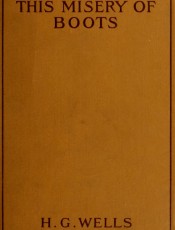fred godfrey was not altogether correct in his dismal prophecy.
queen esther, when she found that one of her prisoners was gone, gave expressions of fury and resumed the march up the river, her warriors keeping closer watch than before to prevent any other escape.
the procession halted near a boulder which rises about eighteen inches above the ground, and which may be seen to-day, as it lies directly east of the battle monument toward the site of burned fort wintermoot, on the brow of the high steep bank, which centuries ago probably marked the shore of the susquehanna.
the eighteen prisoners were driven forward until this celebrated boulder was reached, which has been known ever since by the ominous name of "queen esther's rock."
here the captives were ranged in a circle around the stone, while the queen, with a death-maul and hatchet, proceeded to wreak vengeance upon her victims for the death of her son, killed by a scouting party, a short time before the battle.
one after another, the white men were seated upon the rock, and held by two strong warriors, while the terrible katharine montour chanted a wild dirge, and, raising the death-maul in both hands, dealt the single blow that was all sufficient.
occasionally she varied the dreadful ceremony by using a keen-edged hatchet with her muscular arm, which was as effective as the death-maul wielded by both hands.
the work went on until eleven victims had been sacrificed, when one of the men, lebbeus hammond, was roused by the sight of his own brother, who was placed upon the rock, and tightly grasped by two warriors.
it was impossible to do anything for him, but lebbeus whispered to joseph elliott:
"let's try it!"
on the instant, they wrenched themselves loose from their captors, and bounded down the river bank.
they expected to be shot, and they preferred such a death to that which awaited them if they remained.
but the very audacity of the attempt, like that of fred godfrey, threw the indians into confusion for the moment, and instead of firing they broke into pursuit, without discharging a weapon.
fortunately for the fugitives, instead of keeping together they diverged, hammond heading up the river. the warriors must have concluded that they were making for forty fort, and shaped their course with the purpose of shutting them off. the fort lay to the south and below, and, understanding the aim of the indians, hammond turned more directly up the river.
he was fleet-footed, and ran as never before; but, while straining every nerve, he caught his foot in a root, and was thrown headlong down the bank, rolling all in a heap underneath the bushy top of a fallen tree.
he started to scramble to his feet, when, like a flash, it occurred to him that there was no safer course than to stay where he was.
only a few seconds passed, when the indians approached and began hunting for him. how they failed to discover the young man passes comprehension, and it was only another of the several wonderful escapes which marked the massacre of wyoming.
the savages peered here and there, drawing the bushes aside, and looking among the old logs. the poor fellow heard their stealthy footsteps all around him, and caught glimpses of their coppery faces, smeared with paint, as they uttered some exclamation and almost stepped upon him in his concealment.
once he was sure he was detected, and he held his breath, fearful that the throbbing of his heart would betray him; but the red men moved away, and shortly after returned to queen esther's rock to help in the executions going on there.
hammond stayed where he was until all was still, when he crept cautiously out, and, swimming the river, made his way to the fort at wilkesbarre, where, to his amazement, he found his companion in flight.
the escape of this patriot was no less extraordinary than that of hammond.
he had also swum the river to the bar on the lower point of monocacy island, going almost the entire distance under water. whenever he threw up his head for a breath of fresh air he was fired upon, and he received a bad wound in the shoulder.
although suffering severely from it, he persevered and soon reached the opposite side, where he found a horse wandering loose and without bridle or saddle.
with little effort elliott succeeded in catching him, and with a bridle improvised from the bark of a hickory sapling, he rode the animal to wilkesbarre, where the wound was dressed by a surgeon.
the next morning he went down the river with his wife and child in a canoe managed by a boy, and joined his friends at catawissa.
both hammond and elliott lived many years afterward, and are still remembered by some of the old settlers in wyoming valley.
